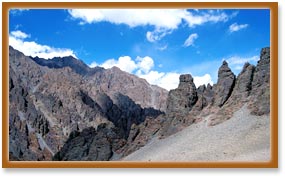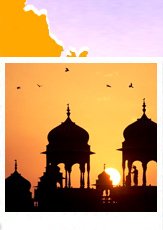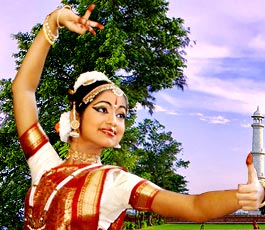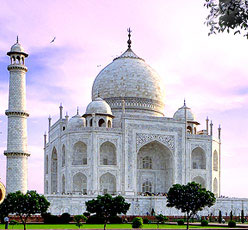 An independent kingdom of the 10th century, Ladakh was continuously pestered by the periodical attacks of the Kashmiri Muslims in the 16th century until it was finally annexed to their state in the mid 19th century. One can see distinct influences of the different visitors to the place in the Ladakhi culture. Indo-Aryan Mons coming from across the Himalayas brought with them the North-Indian Buddhism to the Ladakhi highlands, Darads hailing from the remote western parts of the Himalayas and Baltis of the lower Indus Valley introduced the concept of farming in the region while the wandering nomads from Tibet brought the skills of herding to Ladakh. The proximity to the valleys of Kashmir, Kishtwar and Kulu resulted in the mutual influence of culture and ethno types in between Ladakh and those regions.
An independent kingdom of the 10th century, Ladakh was continuously pestered by the periodical attacks of the Kashmiri Muslims in the 16th century until it was finally annexed to their state in the mid 19th century. One can see distinct influences of the different visitors to the place in the Ladakhi culture. Indo-Aryan Mons coming from across the Himalayas brought with them the North-Indian Buddhism to the Ladakhi highlands, Darads hailing from the remote western parts of the Himalayas and Baltis of the lower Indus Valley introduced the concept of farming in the region while the wandering nomads from Tibet brought the skills of herding to Ladakh. The proximity to the valleys of Kashmir, Kishtwar and Kulu resulted in the mutual influence of culture and ethno types in between Ladakh and those regions.The golden era of Ladakh came in the early 17th century, when its trade flourished under the wise rule of the famous king Sengge Namgyal. His empire stretched across Spiti and western Tibet all the way to the Mayumla situated beyond Mount Kailash and Lake Mansarovar. It was during this period that Ladakh gained fame as the most popular and best trade route between Punjab and Central Asia. The merchants traveling through these routes frequently dealt in textiles, spices, raw silks, carpets, dyed stuffs and narcotics and Leh, served as halfway rest house for them. The popular means of transport was on foot or on horsebacks. The modern vehicles are only in use since the 1960s when the Srinagar- Leh motor-road was finally constructed.
However, the most lucrative trade of the region remained the making of the world-famous pashmina (better known as cashmere) shawls known for their exceptional softness, delicacy and warmth that were produced in the high altitudes of eastern Ladakh and western Tibet and were transported to Srinagar via Leh. The irony is that it is this very trade that attracted the greedy eyes of Gulab Singh, Jammu's ruler to this independent kingdom resulting in a decade long war and turmoil. With the ascent of the British, Ladakh along with neighboring Baltistan became a part of Jammu & Kashmir. After the partition in 1947, Baltistan moved over to the territories of Pakistan while Ladakh is still in India as an integral part of the J&K state.









